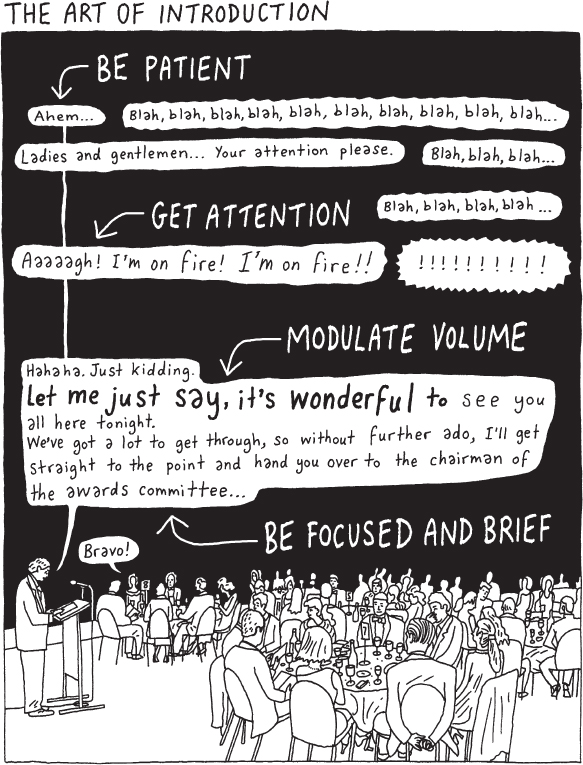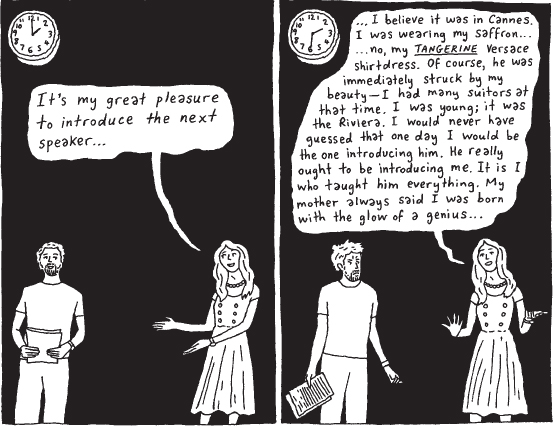Strategies for Speeches of Introduction
Printed Page 598
When you’re giving a speech to introduce another speaker, a performer, or an event, you have three goals:
- Shifting your listeners’ focus from interacting with one another to paying attention to the upcoming event
- Building anticipation and excitement for the upcoming topic and speaker or presentation
- Introducing the person, performance, or event that’s coming next
When making an introduction, remember that you are not the main entertainment. Your primary goal is to facilitate what’s coming next, and there is nothing more disastrous than an introductory speaker who goes on too long or tries too hard. Thus, take care not to upstage the speaker or event you’re introducing. In particular, resist any urge to talk at length about yourself. Also, be sure to express some of your own appreciation for and anticipation of the upcoming event. The following tips can help you keep your audience focused on the main event and effectively achieve your three-part goal in giving a speech of introduction.
Be Patient. When the time comes for you to start your introduction, many listeners may still be settling into their seats, finishing a meal, or simply chatting with one another. To help them gradually shift their attention to you, stand up and begin talking above the background noise and voices in the room. But be patient: it takes time for people to transition away from what they’re doing at the moment.
Use Attention-Getters. To further focus your listeners on the upcoming speaker or event, use attention-getters to cut through any noise or conversation in the room, making sure that you remain appropriate for the setting. Consider the attention-getters mentioned in chapter 10—particularly one of the following: incorporate a striking statement, use a little bit of humor, or take the opportunity to let listeners know that you’re one of them.


Modulate Your Volume. Even if you are working with a microphone, you may need to speak loudly at first to overcome the prevailing noise in the room and grab listeners’ attention. After your speech is under way, be sure to lower your voice as the room quiets down. If conversation stirs again later during your speech, you can always raise your voice once more to an appropriate level.
Be Focused and Brief. Remember that your job is to prepare the audience to pay attention to the speaker or performance that will follow you. To that end, keep your comments focused on that event. Also, make sure your introduction is concise. Otherwise, audience members may start seeing you as the main entertainment, or they may lose interest in the next part of the program.
